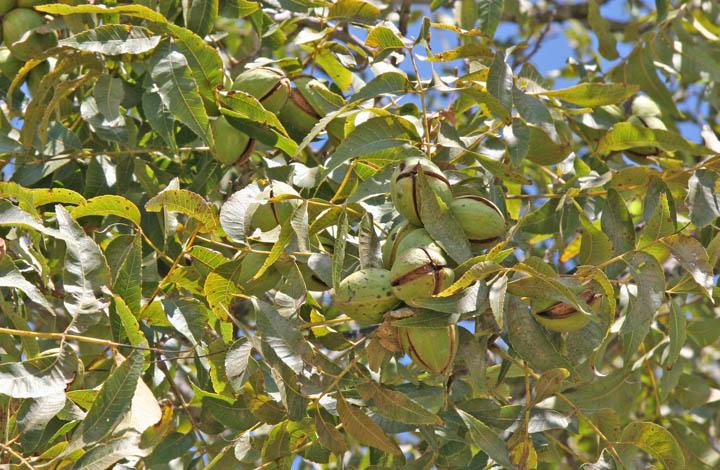
Half way through the growing season, pecan grower representatives in New Mexico and Arizona are predicting a larger harvest in 2012, provided unexpected problems don’t surface in the months ahead.
Western Pecan Growers Association directors gathered in Las Cruces in late July to assess crop conditions and to finalize plans for their annual conference in March 2013.
“In New Mexico we’re looking at an estimated 58 million pounds of pecans this year, largely because we have more orchard acres than last year and because a freeze in February eliminated the threat of pecan casebearers this year,” reports Dona Ana County extension agent Jeff Anderson.
Dona Ana County produces the lion’s share of New Mexico’s pecan crop and Anderson says pecan operations are growing there as many local growers convert traditional chile acres to new pecan orchards, the primary reason the state’s nut production is expected to be larger than in years past.
“New Mexico is traditionally the third largest pecan production state behind Georgia and Texas. But drought conditions in Texas this year may reduce yields enough for New Mexico to surpass them in total pounds harvested,” he added. “Regardless of their numbers, pecan production in New Mexico is expected to rise significantly this year.”
Anderson says with the exception of eastern Arizona, disease pressure is low this year and with the absence of casebearers in southern New Mexico, yields should be greater, perhaps even a record harvest year.
“No one wants to speculate this early in the game because a lot of things can go wrong. But if nothing drastic happens, overall we’re looking at a very good year for pecans,” Anderson reports.
He says drought conditions continue across the region, but New Mexico pecans are irrigated and so far there has been enough water to sustain orchards.
“If we have a water related problem, it is with new growers who simply aren’t putting enough water on their orchards. Pecan trees require a great deal of water and many new growers are just now coming to terms with that. But overall, orchards throughout the region have been irrigated properly and are looking good at this point in the season,” he adds.
Anderson said Western Pecan Grower Association leaders were also briefed on the estimated production numbers nationwide. At this point, 265,000 to 282,000 pounds of pecans are expected in the U.S.
“Pecan prices are good right now and demand from importers like China has been growing. You never know until the contracts are signed and the nuts are shipped, but it looks like demand will remain high this year to facilitate a larger crop,” he said.
Pecan experts estimate that China buys nearly 25 percent of the U.S. crop, and that number may be rising. In addition, Anderson says pecans are being promoted as a “healthy food” and popularity has been growing among domestic consumers.
In other business, Western Pecan Grower directors finalized plans for the March conference. The two-day annual conference will be held in Las Cruces March 4-6 and will feature workshops on hedging, spraying, drought impact, ground water, new varieties, pre-emergence herbicides, pest control and other items.
For more information or to register for the conference, visit http://www.westernpecan.org/.
About the Author(s)
You May Also Like




